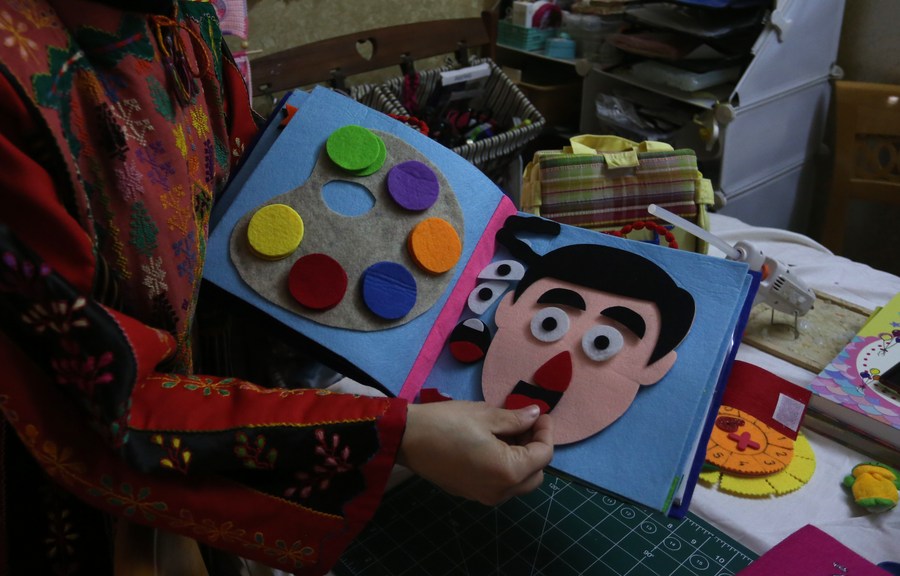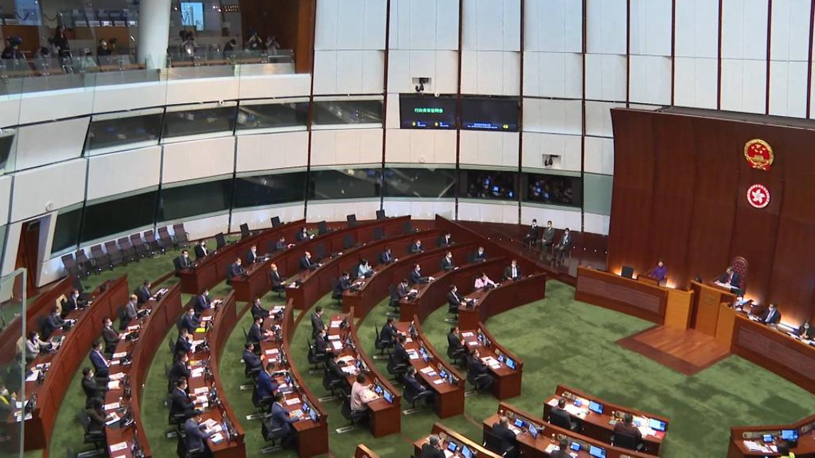
Palestinian Ghalia Ahmed makes interactive books out of fabric at her home in the West Bank city of Tulkarem, on Dec. 28, 2021. (Photo by Nidal Eshtayeh/Xinhua)
Ghalia Ahmed, a Palestinian mother of three, came up with the idea of creating hand-made interactive books two years ago, when her daughter asked her to buy one but she could not find any in the West Bank.
Now, Ghalia uses multi-colored cardboard and fabric to make dozens of interactive books, which are also sold to other Arab countries.
by Sanaa Kamal
RAMALLAH, Jan. 16 (Xinhua) -- Ghalia Ahmed, a 38-year-old Palestinian woman from the West Bank city of Tulkarm, spends long hours a day making interactive books for children using cardboard and cloths.

Palestinian Ghalia Ahmed makes interactive books out of fabric at her home in the West Bank city of Tulkarem, on Dec. 28, 2021. (Photo by Nidal Eshtayeh/Xinhua)
Ghalia, a pharmacist and mother of three, told Xinhua that she came up with the idea two years ago when her daughter asked her to buy an interactive book like the one she saw on TV.
"I looked for an interactive book in most of the libraries in the West Bank, but I couldn't find any. Therefore, I decided to make one by myself," she said.
At that time, Ghalia used multi-colored cardboard and fabric to make her ten-page interactive book that contained pet figures and some of her girl's favorite cartoons.
"I was very happy when I was able to fulfill my daughter's dream of getting this type of book," she said, adding the books made her more interactive with other children and prevented her from using a mobile phone.

Palestinian Ghalia Ahmed makes interactive books out of fabric at her home in the West Bank city of Tulkarem, on Dec. 28, 2021. (Photo by Nidal Eshtayeh/Xinhua)
Soon after, her relatives and colleagues also asked her to produce such books for their children too.
In order to make unique interactive books for each child, Ghalia used to chat with their mothers so that she could learn more about each one of the children.
In addition, the quality and content of books differ according to children's ages, as they start from the most easy-to-read books to interactive books.
"I make books for children starting from the age of 11 months, as these books are distinguished by containing only three colors, which are white, black, and red because the child at this age is usually unable to distinguish colors," Ghalia said.
"For one-year-old and above, I start introducing colors into books to develop children's nervous system," she continued.
"After that, I make books based on sight, touch and interaction, in order to teach children the basic skills of interacting with the tools in their hands," she explains.

Palestinian Ghalia Ahmed makes interactive books out of fabric at her home in the West Bank city of Tulkarem, on Dec. 28, 2021. (Photo by Nidal Eshtayeh/Xinhua)
Those positive feedbacks encouraged Ghalia to turn her initiative into an investment project, as she manufactures interactive books and markets them through her social media.
Ghalia's industry of interactive books is not limited to normal children. She also makes interactive books for children with special needs, such as Down syndrome or children with problems of speech, hearing, and vision.
"These books are made based on scientific, methodological and psychological studies, after consulting with specialists, as they contain activities appropriate to the psychological state of these children," she noted.
Ghalia aspires to set up her own workshop and employ some women to produce as many books as possible, and export them to Arab countries.
The books she made cost from 45 to 100 U.S. dollars each.
Ghalia was able to sell and export interactive books to Jordan, the United Arab Emirates, Kuwait, the United States of America and the Gaza Strip. ■












